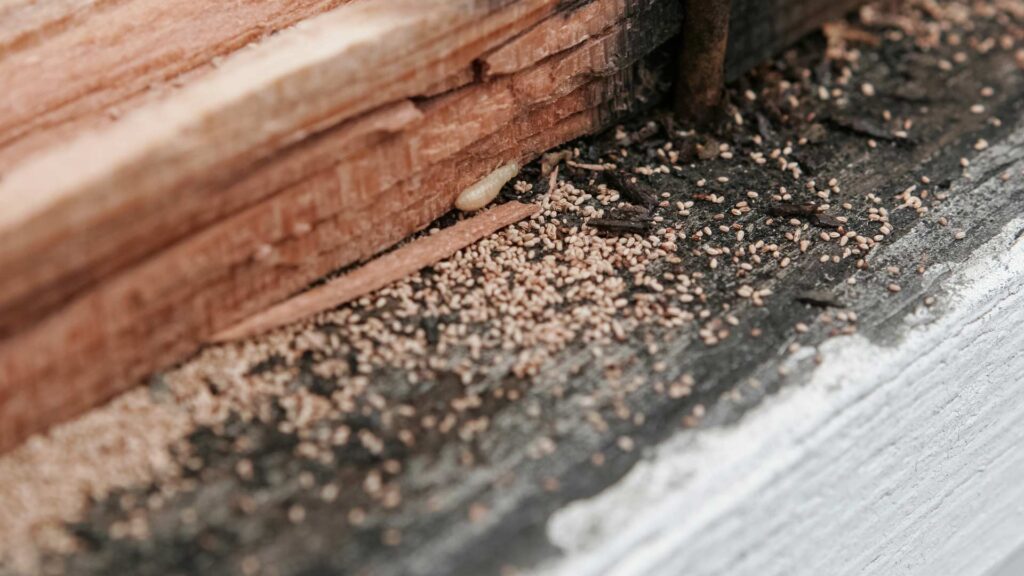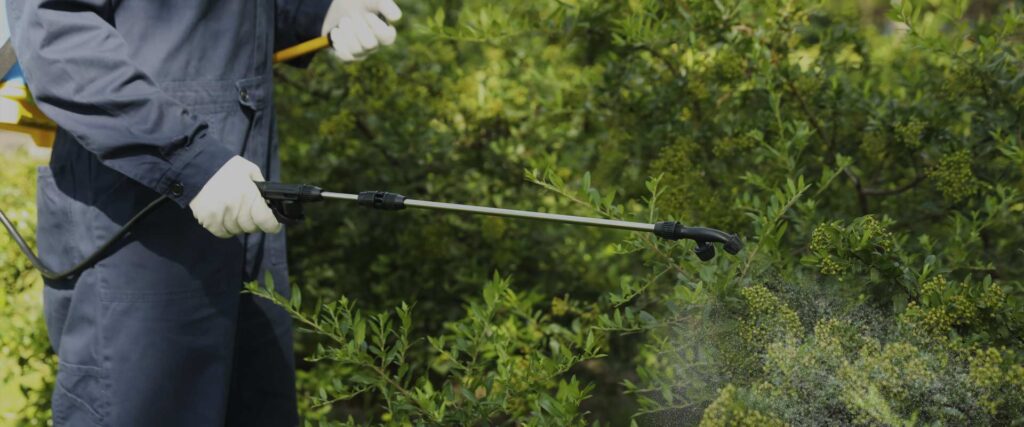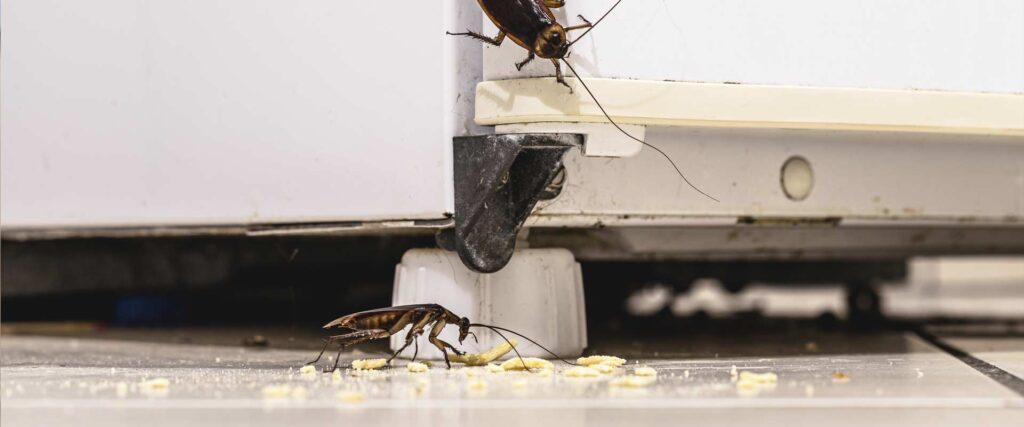What are Common Christmas Tree Bugs?
Common Christmas tree bugs, such as aphids, spiders, mites, and bark beetles, can often hitch a ride into your home on your holiday tree. While these pests are generally harmless to humans, they can be a nuisance. To prevent an infestation, inspect your tree for bugs before bringing it indoors, use mechanical shaking services at tree lots, regularly vacuum around the tree, and apply natural insect repellents. Keeping your tree away from heat sources also helps deter these common pests, ensuring a bug-free and joyful holiday season.
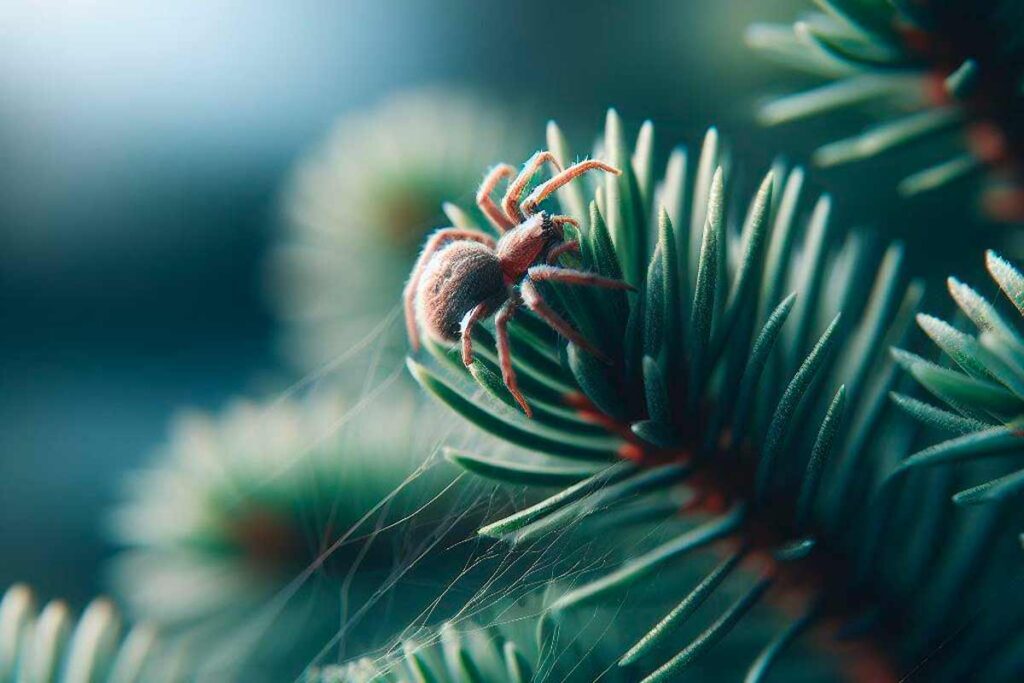
- Unseen Guests: The Common Christmas Tree Bugs Lurking in Your Living Room
- The Hidden World in Your Holiday Tree: A Closer Look
- Types of Insects Commonly Found in Christmas Trees
- Aphids: The Sap Lovers
- Spiders and Mites: The Web Weavers in Your Christmas Tree
- Bark Beetles: The Wood Burrowers
- Identification and Management
- Practical Advice for Homeowners
- The Bigger Picture
- FAQ: Common Christmas Tree Bugs
Unseen Guests: The Common Christmas Tree Bugs Lurking in Your Living Room
The holiday season, with its festive cheer and family gatherings, is often marked by the iconic tradition of decorating a Christmas tree. These evergreens, whether freshly cut or carefully selected from a tree farm, are more than just symbols of holiday spirit; they are a piece of nature brought into our homes. However, this merging of the outdoors with the indoor environment comes with an often-overlooked consequence: the introduction of various insects and bugs that call these trees home. This article aims to shed light on the common types of Christmas tree bugs, exploring their impact on home safety and human health, and providing practical advice for homeowners.
The tradition of bringing a live tree into the home dates back centuries, symbolizing life and resilience in the heart of winter. Yet, in our modern pursuit of this tradition, we inadvertently invite a host of tiny, hidden inhabitants into our living spaces. From the aphids that cluster around the needles to the spiders that weave their webs among the branches, these bugs are a natural part of the tree’s ecosystem. While mostly harmless, their presence in the home environment can cause concern and discomfort for many.
Understanding the types of bugs commonly found in Christmas trees, their behaviors, and the potential risks they pose is crucial for homeowners. It’s a delicate balance between maintaining the holiday tradition and ensuring the health and safety of the home environment. This article delves into the world of these tiny intruders, offering insights from entomologists, anecdotes from homeowners, and advice from tree care experts.
As we embark on the festive season, it’s important to be aware of these unseen guests. While they may not bring holiday cheer, understanding their role in our Christmas traditions and how to manage their presence can help ensure a happy, healthy, and bug-free holiday season.
The Hidden World in Your Holiday Tree: A Closer Look
The tradition of bringing a live Christmas tree into the home is a cherished part of the holiday season for many. However, this festive practice can inadvertently introduce a variety of insects into our living spaces. Understanding the ecology of these tiny stowaways and their interaction with the holiday tree can help homeowners manage this hidden aspect of the holiday season more effectively.
A Christmas tree is not just a holiday decoration; it’s a living, breathing ecosystem. In its natural environment, a tree is home to numerous species of insects and arachnids. When we bring these trees indoors, we also bring along these tiny inhabitants. Studies have shown that a single tree can harbor thousands of bugs, many of which remain dormant in the cold outdoor temperatures, only to become active once inside our warm homes.
Types of Insects Commonly Found in Christmas Trees
- Aphids: Often found in clusters, these small, sap-sucking insects are particularly attracted to the new growth of fir trees. While they pose no threat to furniture or human health, their presence can be off-putting.
- Spiders and Mites: These arachnids are typically predators, feeding on other tree-dwelling insects. While spiders are generally harmless and can even help by reducing the population of other pests, mites may cause the needles of the tree to discolor and drop off prematurely.
- Pine Needle Scale: These are small, white insects that attach themselves to pine needles. They feed on the sap and can cause the needles to turn yellow and drop off.
- Bark Beetles: These beetles bore through the bark and wood of the tree. While they are not a danger to furniture or human health, their burrowing can weaken the structural integrity of the tree.
While most of these insects are harmless and go unnoticed, their presence can sometimes lead to minor inconveniences. For instance, aphids might be mistaken for ticks, causing undue concern. Spiders, though beneficial in controlling other pests, can create unsightly webs. In rare cases, individuals with certain allergies might react to these bugs.
It’s important to remember that these insects are a natural and essential part of the tree’s ecosystem. They play roles in nutrient cycling, soil health, and the broader ecological community. In the wild, these insects contribute to the health and longevity of forests.
Understanding that a Christmas tree is more than just a festive symbol, but a living piece of nature, can help us appreciate the broader connections between our holiday traditions and the natural world. By acknowledging the presence of these tiny creatures, we can better prepare and manage our indoor environments during the holiday season, ensuring a harmonious coexistence with the natural world we bring into our homes.
-
Best OverallSave $50 on your first recurring service today with code GET50
-
Best for TermitesSave $50 on pest control services with code SAVE50 at checkout
-
Best for Bed BugsGet a free estimate on pest control services for your home
-
Best for Wildlife RemovalCall For A Fast & FREE Phone Estimate Today
-
Best for Natural TreatmentGet $100 Off Your Termite Treatment Service
Aphids: The Sap Lovers
Aphids, often found nestled in the branches of Christmas trees, are a common sight during the holiday season. These small, sap-sucking insects are typically green or brown and can be mistaken for ticks due to their similar size and shape. Despite their unassuming appearance, aphids play a significant role in the ecosystem of a Christmas tree and can impact the indoor environment.
Aphids have a fascinating life cycle that is often overlooked. They are born live, skipping the egg stage when conditions are favorable, such as in the warm environment of a home. This rapid reproduction means a few aphids can quickly become a noticeable infestation. They feed by inserting their needle-like mouthparts into the tree’s phloem, the part of the tree that transports nutrients, to consume the sap. This sap is crucial for the tree’s survival, especially during the stressful period of being cut and displayed.
While aphids pose no direct threat to human health, their presence can be more than just a nuisance. As they feed on the sap, they excrete a sticky substance known as honeydew. This honeydew can attract other insects and may lead to the growth of sooty mold, a type of fungus that appears as a black coating on the tree’s needles and branches. Although this mold is not harmful to humans, it can be unsightly and may cause concern for homeowners.
For those who encounter aphids in their Christmas trees, there are several effective management strategies:
- Preventive Inspection: Carefully inspect the tree for aphids before purchase. Pay special attention to the undersides of branches and near the trunk, as aphids tend to congregate in these areas.
- Gentle Cleaning: If aphids are found, gently brush them off the branches or use a soft stream of water to dislodge them. This should be done outdoors to prevent spreading them inside the house.
- Natural Predators: Introducing natural predators, like ladybugs, can be an organic way to control aphid populations. Ladybugs are efficient at consuming large numbers of aphids and can be a natural solution to the problem.
- Avoid Chemicals: It’s important to avoid using harsh chemical insecticides, especially indoors. These can be harmful to both humans and pets and may damage the tree.
- Regular Monitoring: Keep an eye on the tree throughout the season. Early detection of a resurgence can make management much easier.
Aphids, despite their potential as pests, play an important role in the outdoor ecosystem. They serve as a food source for many beneficial insects and birds. Their presence in Christmas trees is a reminder of the intricate connections between our holiday traditions and the natural world.
While aphids in Christmas trees can be a concern for homeowners, understanding their behavior and life cycle can help in effectively managing them. With a combination of preventive measures and natural control methods, the impact of these sap lovers can be minimized, ensuring a festive and bug-free holiday season.
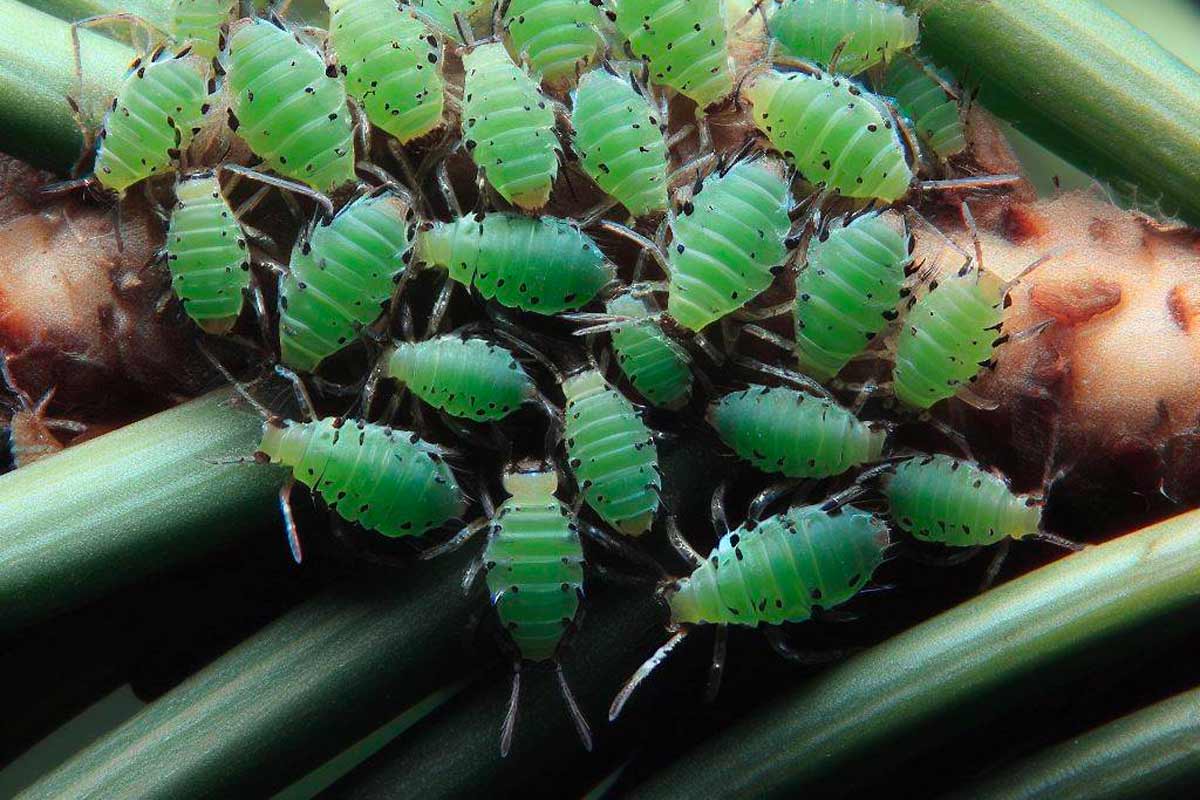
Spiders and Mites: The Web Weavers in Your Christmas Tree
When it comes to the festive tradition of bringing a Christmas tree into the home, many are unaware of the tiny, often unseen inhabitants that come along with it. Among these are spiders and mites, collectively known as the web weavers, which can turn your holiday centerpiece into their new habitat.
Spiders found in Christmas trees are typically harmless to humans. They belong to species that prefer the outdoors and are not adapted to indoor environments. These arachnids are often brought into homes unintentionally with the tree. While their presence might be off-putting to some, spiders play a beneficial role. They prey on other insects, potentially reducing the population of other pests in the tree.
However, their webs can be a concern. Spiders may spin webs on the branches, which, while not harmful, can detract from the aesthetic appeal of your tree. These webs can also collect dust, making the tree appear less fresh and vibrant.
Mites, on the other hand, are so small they are often invisible to the naked eye. These creatures feed on the tree’s sap, dead needles, and even other insects. While mites do not pose a health risk to humans, their presence can be a nuisance. In some cases, if the tree is heavily infested, mites can migrate from the tree in search of new food sources, which can lead to them being spotted on nearby furniture or decorations.
Some species of mites, when present in large numbers, can cause the foliage to discolor or needles to drop prematurely, affecting the tree’s overall appearance. It’s also worth noting that certain types of mites are attracted to mold, so a tree kept in a humid environment might be more susceptible to mite infestations.
For homeowners concerned about these web weavers, there are several steps that can be taken:
- Inspect the Tree Before Buying: Carefully examine the Christmas tree for signs of insects or nests before purchasing. Look closely at the branches, under the needles, and in the crevices of the trunk.
- Shake the Tree: Many Christmas tree lots have mechanical shakers, which can help dislodge insects and loose needles. If not, give the tree a good shake yourself.
- Leave the Tree in the Garage: Before bringing the tree into your house, leave it in your garage or a covered area for a day or two. This can encourage any hidden pests to leave the tree.
- Use a Vacuum: If you notice any spiders or webs on the tree, use a vacuum cleaner to remove them. Avoid using insecticides as they can be flammable and toxic, especially in an indoor environment.
- Regular Maintenance: Once the tree is inside, keep an eye on it for any signs of pests. Regularly clean up fallen needles since they can attract pests.
- Dispose of the Tree Properly: After the holiday season, promptly remove the tree from your home and dispose of it according to your local regulations. This helps prevent any pests from settling in your home.
Remember, most insects brought in with a Christmas tree are harmless and will not survive long indoors due to the lack of food and different environmental conditions. However, taking these precautions can help ensure a pest-free holiday experience.
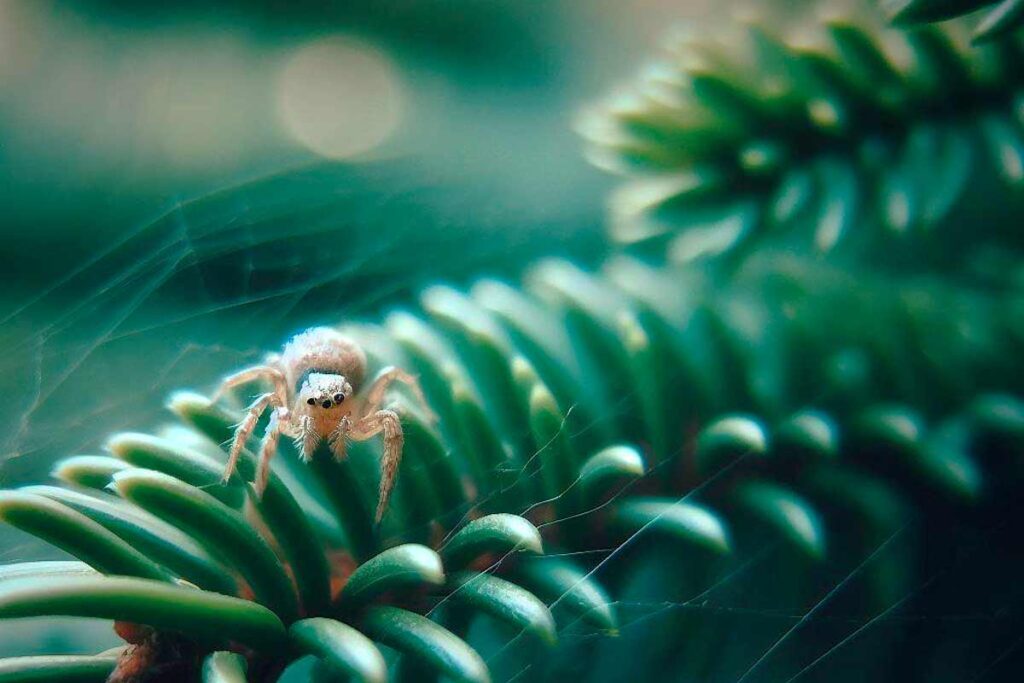
Bark Beetles: The Wood Burrowers
Bark beetles, often unnoticed at first glance, can be a more serious concern for homeowners during the festive season. These small, cylindrical insects, typically ranging from 1 to 7 millimeters in length, are known for their wood-boring habits. They primarily infest pine, fir, and spruce trees – the same varieties commonly used as Christmas trees.
Understanding the life cycle of bark beetles is crucial in comprehending their impact. These insects lay their eggs under the bark of trees. Once hatched, the larvae begin to burrow, creating intricate galleries as they feed on the tree’s nutrients. This burrowing can disrupt the tree’s ability to transport water and nutrients, often leading to its death. In a forest setting, bark beetles play a vital role in the ecosystem by aiding in the decomposition of dead wood. However, in the context of a Christmas tree in your living room, they can be a cause for concern.
While bark beetles don’t pose a direct threat to human health, their presence in a Christmas tree can be indicative of a deeper issue. Infested trees are often those that are stressed or dying, as healthy trees can usually resist beetle invasions. When a Christmas tree with a bark beetle infestation is brought indoors, the warmth can trick the beetles into thinking it’s spring, leading them to emerge from the tree. This can be alarming to homeowners, though the beetles are more of a nuisance than a hazard.
Homeowners should be aware of the signs of bark beetle infestation. These include small holes in the trunk, sawdust-like frass (insect waste) around the base of the tree, and the presence of tiny, cylindrical beetles. If the tree’s needles are prematurely dry or falling off, this could also indicate an infestation, as the tree’s health has been compromised.
To prevent bringing bark beetles into your home with your Christmas tree, consider the following steps:
- Careful Selection: Choose a healthy tree from a reputable source. Look for vibrant needles and a sturdy appearance.
- Inspection: Examine the trunk for holes or sawdust-like frass.
- Quarantine: Before bringing the tree inside, keep it in a garage or covered area for a few days to monitor for signs of beetles.
- Professional Advice: If you suspect an infestation, consult with a local arborist or pest control professional for guidance.
While bark beetles in Christmas trees are relatively rare, being aware of their potential presence is important. By taking preventive measures and staying vigilant, homeowners can enjoy their holiday traditions without unwelcome surprises. Remember, these beetles, although a nuisance in the home, play a crucial role in their natural habitat, contributing to the health and balance of forest ecosystems.
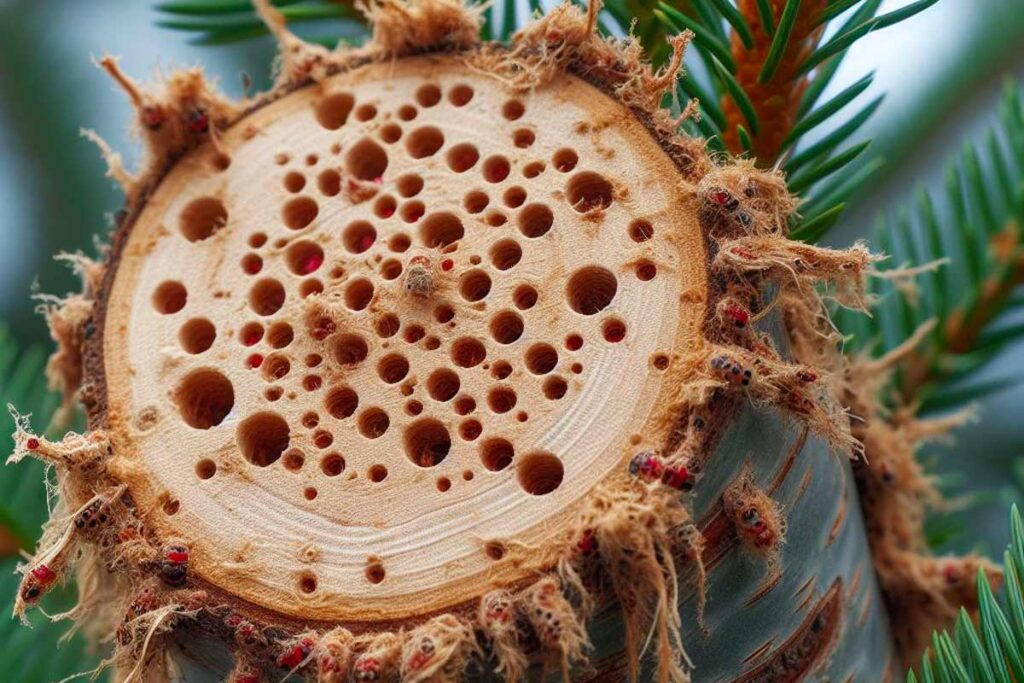
Identification and Management
| Bug Type | Appearance and Behavior | Potential Impact | Management Tips |
|---|---|---|---|
| Aphids | Small, green or black insects, often mistaken for ticks. | Nuisance; no health threat. | Inspect tree before purchase. Vacuum regularly. |
| Spiders | Various sizes and colors. Beneficial for pest control. | Webbing can be unsightly. | Use natural repellents. Avoid insecticides. |
| Mites | Tiny, spider-like. May cause tree discoloration. | Minor tree damage. | Keep tree hydrated. Vacuum fallen needles. |
| Bark Beetles | Small, dark beetles. Burrow into wood. | Can indicate tree health issues. | Choose a healthy tree. Inspect for boreholes. |
Insights and Considerations
- Natural Ecosystem: These bugs are part of the tree’s natural ecosystem and rarely cause significant harm.
- Prevention Over Cure: Inspecting and shaking the tree before bringing it indoors is key.
- Health and Safety: None of these bugs pose serious health risks, but awareness and basic management can prevent any potential discomfort.
- Eco-Friendly Practices: Opt for natural repellents and avoid harsh chemicals to maintain a safe and environmentally friendly household during the holidays
Practical Advice for Homeowners
When it comes to managing the presence of bugs in Christmas trees, homeowners can adopt a more thorough approach to ensure a pest-free holiday. Beyond basic inspection and shaking, there are several effective strategies to consider.
Firstly, after inspecting and shaking the tree, leave it in a garage or covered area for a day or two before bringing it indoors. This period allows any remaining insects to vacate the tree in a more natural environment. Additionally, using a tree skirt can help in easily identifying and cleaning up any fallen pests without them scattering across your floor. It’s also advisable to avoid using insecticides on Christmas trees, as they can be flammable and toxic, especially in an indoor environment. Instead, opt for natural deterrents like diatomaceous earth, which is safe for humans and pets but lethal to insects with exoskeletons.
Moreover, maintaining the health of the tree is crucial in preventing bug infestations. Ensure your Christmas tree has adequate water, as a hydrated tree is less likely to attract pests. Regularly check the water level and keep the tree stand filled. After the holiday season, dispose of the tree promptly and responsibly. Many communities offer Christmas tree recycling programs, which not only help in managing waste but also reduce the likelihood of bugs lingering in your home or yard.
To mitigate these issues, experts recommend the following steps:
- Inspection: Before bringing a tree into your home, inspect it thoroughly for signs of bugs.
- Shaking: Many tree lots offer a mechanical shaking service to dislodge any insects.
- Vacuuming: Regularly vacuum around the tree to remove any fallen bugs.
- Natural Remedies: Use natural insect repellents, like neem oil, to deter bugs without using harmful chemicals
- Avoid Heat Sources: Keep the tree away from heat sources, as this can dry it out, making it more attractive to pests.
The Bigger Picture
While the thought of bugs in your Christmas tree might be unsettling, it’s important to remember that these insects are a natural part of the tree’s ecosystem. They rarely pose a significant threat to your home or health. By taking simple preventative measures, you can enjoy your holiday season without unwanted pests.
While Christmas tree bugs are a common occurrence, they are generally harmless and can be managed with simple, practical steps. By staying informed and proactive, homeowners can ensure their holiday season remains merry, bright, and bug-free.
the presence of bugs in Christmas trees is a natural and common phenomenon, but it need not dampen the holiday spirit. Understanding the types of insects that may inhabit these festive trees and the minimal risk they pose is crucial for homeowners. Most of these bugs are harmless and are simply seeking refuge in the warmth of our homes during the cold winter months. Their presence is more a testament to the naturalness of the tree than a cause for alarm.
However, awareness and preventive measures are key. Homeowners should not overlook the importance of inspecting and maintaining their Christmas trees throughout the season. Simple steps like thorough inspection at the point of purchase, using mechanical shakers available at many tree lots, and regular vacuuming around the tree can significantly reduce the likelihood of bug-related issues. Additionally, opting for natural insect repellents instead of chemical pesticides preserves both the health of the household and the environment.
It’s also worth noting that these insects are part of a larger ecological system. They play a role in the life of the tree and, by extension, the broader environment. In most cases, they will not survive long inside a home due to the lack of their natural habitat and food sources. Thus, while their presence might be surprising, it is often short-lived and with minimal impact.
Moreover, educating oneself about these tiny inhabitants can transform a potentially alarming discovery into an opportunity for learning and appreciation of nature’s complexities. For families with children, this can be an excellent chance to teach about different insect species and their roles in the ecosystem.
Finally, the Christmas season is a time of joy, warmth, and celebration. The presence of a few bugs should not overshadow the beauty and tradition of having a real Christmas tree. With the right knowledge and precautions, homeowners can continue to enjoy this timeless holiday tradition with peace of mind, knowing they are well-equipped to handle any tiny guests that may come along with their tree.
In essence, while Christmas tree bugs are a part of the natural experience of a real tree, they are a minor and manageable aspect. With a balanced approach of vigilance and understanding, we can appreciate the full beauty and tradition of our Christmas trees, bugs and all, without compromising the safety and comfort of our homes.
FAQ: Common Christmas Tree Bugs
What types of bugs are commonly found in Christmas trees?
Christmas trees can host a variety of bugs, including aphids, spiders, mites, and bark beetles. Most of these insects are harmless and go unnoticed.
Are these bugs harmful to humans or pets?
Generally, the bugs found in Christmas trees pose no harm to humans or pets. They are more of a nuisance than a health hazard. However, some people might experience mild allergic reactions to certain bugs.
How can I check for bugs in my Christmas tree before bringing it indoors?
Inspect the tree thoroughly in a well-lit area before purchase. Look for any signs of movement or nests. Gently shake the tree to dislodge hidden bugs.
What should I do if I find bugs in my Christmas tree?
If you find bugs, you can vacuum them up. Avoid using pesticides as they can be harmful indoors. For persistent problems, consider natural repellents like neem oil.
Can Christmas tree bugs infest my home?
It’s rare for Christmas tree bugs to infest a home because they typically cannot survive long indoors. Most die naturally due to the lack of food and different environmental conditions.
How can I prevent bugs from coming into my home with the Christmas tree?
You can prevent bugs by shaking the tree before bringing it inside, using a tree skirt to catch falling bugs, and keeping the tree away from heat sources to reduce drying out, which attracts pests.
Are artificial Christmas trees a better option to avoid bugs?
Artificial trees don’t have the bug issues that real trees might have, but they lack the natural look and scent. The choice depends on personal preference and tolerance for potential bugs.
How long do bugs typically live in a Christmas tree?
Most bugs in Christmas trees will not survive longer than a few days indoors due to the lack of food and the dry indoor environment.
Can I use bug spray on my Christmas tree?
It’s not recommended to use bug spray on your Christmas tree as it can be flammable and toxic, especially in enclosed spaces. Natural repellents are a safer choice.
Will the cold weather outside kill the bugs in the tree?
While cold weather can reduce the number of active bugs, it doesn’t guarantee that the tree will be bug-free. Many insects can survive in a dormant state until they are brought into a warm home.
-
Best OverallSave $50 on your first recurring service today with code GET50
-
Best for TermitesSave $50 on pest control services with code SAVE50 at checkout
-
Best for Bed BugsGet a free estimate on pest control services for your home
-
Best for Wildlife RemovalCall For A Fast & FREE Phone Estimate Today
-
Best for Natural TreatmentGet $100 Off Your Termite Treatment Service







